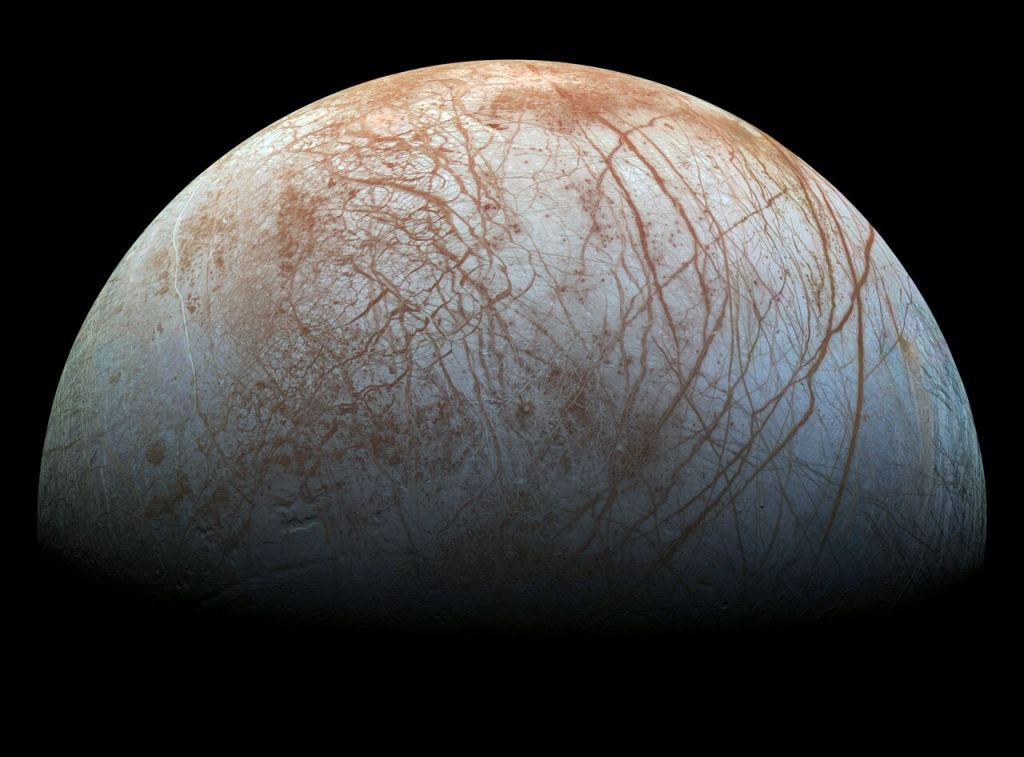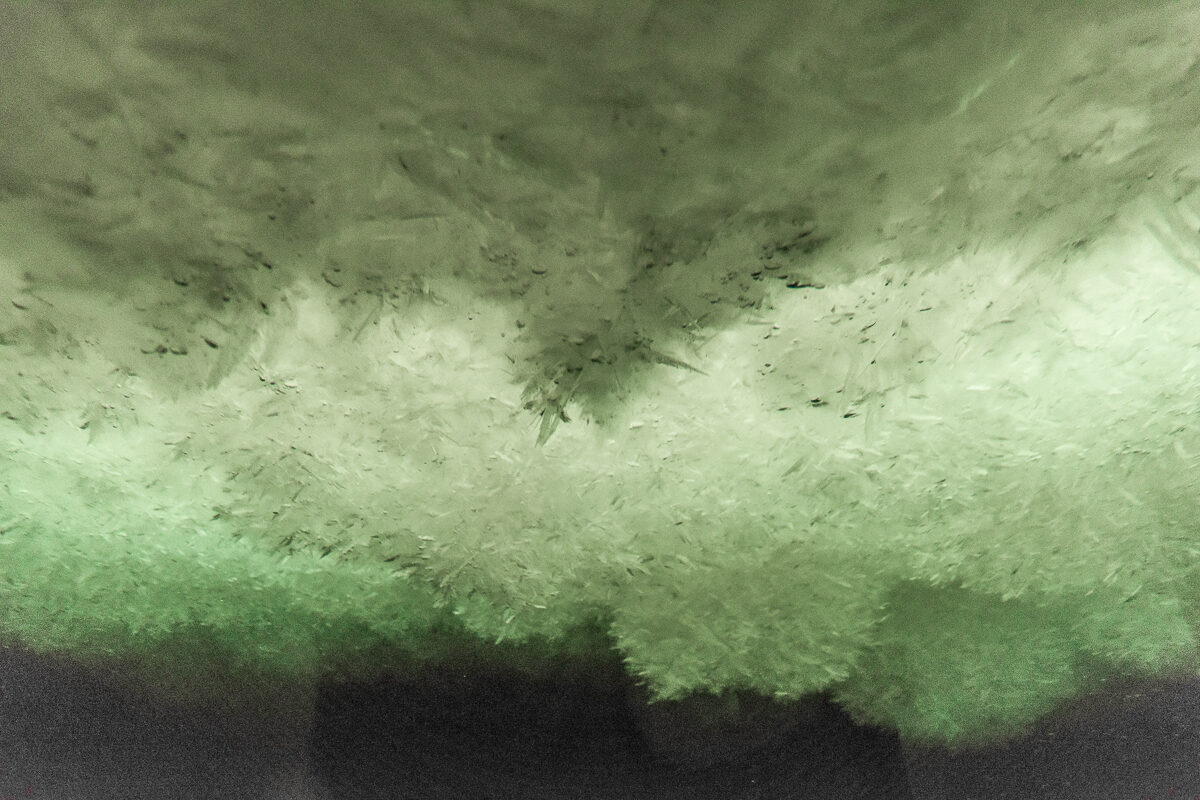For decades, evidence has been mounting that beneath the icy crust of Jupiter’s moon Europa, a vast ocean exists that could possibly host microbial life. As scientists prepare to send the Europa Clipper mission to orbit the Jupiter system, they are trying to learn more about the subsurface ocean and the ice that encompasses the moon.
One way to study Europa is to look at similar environments here on Earth. Scientists say that conditions found under Earth’s Antarctic ice shelf provides an analog to Europa’s subsurface ocean and can help them determine how the moon’s ice shell accretes and grows.
A new study published in the journal Astrobiology looked at a unique phenomenon in the Antarctic ocean called underwater snow. This is where ice floats upwards onto the bottom of the ice shelf and attaches in fluffy-looking mounds. This helps to replenish the ice shelf. The study infers that the same phenomenon is likely true for Jupiter’s moon, and may play a role in building and replenishing its exterior ice shell.
According to co-author Donald Blankenship, a senior research scientist at the University of Texas at Austin, studying this feature on Earth is helping scientists to understand the habitability of Europa.
“We can use Earth to evaluate Europa’s habitability, measure the exchange of impurities between the ice and ocean, and figure out where water is in the ice,” he said in a press release. Blankenship is also the principal investigator for Europa Clipper’s ice penetrating radar instrument, which will use radar to peer beneath the ice shell to see if Europa’s ocean could be hospitable to life.
Scientists hope at some point to send a submarine or a swarm of swimming robots to study Europa’s ocean in-situ.

Previous studies suggest the temperature, pressure and salinity of Europa’s ocean nearest to the ice is similar to what is found beneath an ice shelf in Antarctica. The team said that knowing what kind of ice Europa’s shell is made of will also help decipher the salinity and habitability of its ocean.
“When we’re exploring Europa, we’re interested in the salinity and composition of the ocean, because that’s one of the things that will govern its potential habitability or even the type of life that might live there,” said the study’s lead author Natalie Wolfenbarger, a graduate student researcher at the University of Texas Institute for Geophysics (UTIG).
Below Europa’s thick icy crust is a massive ocean, despite the moon’s great distance from the Sun. If everything else were equal, the distance would put Europa well beyond our star’s habitable zone – where conditions are right for liquid water to exist on another world. However, Europa’s ocean exists because of tidal heating, where the moon is constantly either stretched or compressing as it orbits the massive planet Jupiter in an elliptical orbit. Additionally, Europa is also being constantly tugged by fellow moons, Io and Ganymede, This tidal heating leads to friction within Europa’s core, corresponding to heat and ultimately melting the inner ice into what is now Europa’s massive ocean.
Scientists think Europa’s ice shell is 10 to 15 miles (15 to 25 kilometers) thick, floating on an ocean 40 to 100 miles (60 to 150 kilometers) deep. So, even though Europa is only one-fourth the diameter of Earth, scientists think its ocean may contain twice as much water as all of Earth’s oceans combined.

The new study says that the underwater snow is much purer than other kinds of ice, which means Europa’s ice shell could be much less salty than previously thought. That’s important for calibrating the radar instrument for Europa Clipper, as salt trapped in the ice can affect what and how deep the radar will see into the ice shell. Being able to predict what the ice is made of will help scientists make sense of the data.
“This paper is opening up a whole new batch of possibilities for thinking about ocean worlds and how they work,” said Steve Vance, a research scientist at NASA’s Jet Propulsion Laboratory (JPL) who was not involved in the study. “It sets the stage for how we might prepare for Europa Clipper’s analysis of the ice.”
Read the team’s paper abstract in Astrobiology
Press release from the University of Texas at Austin

